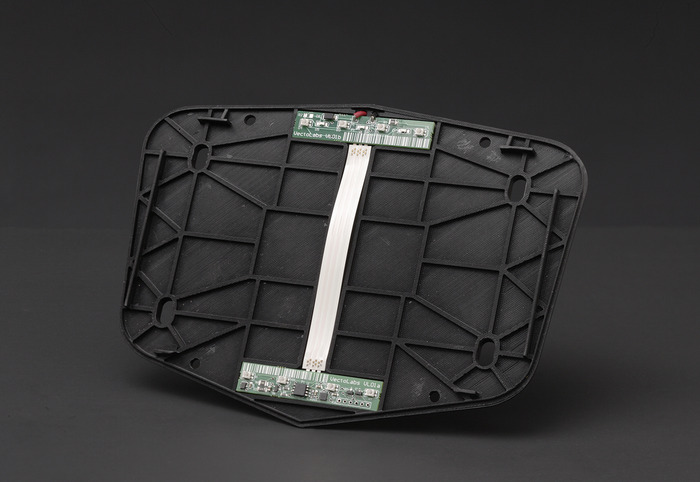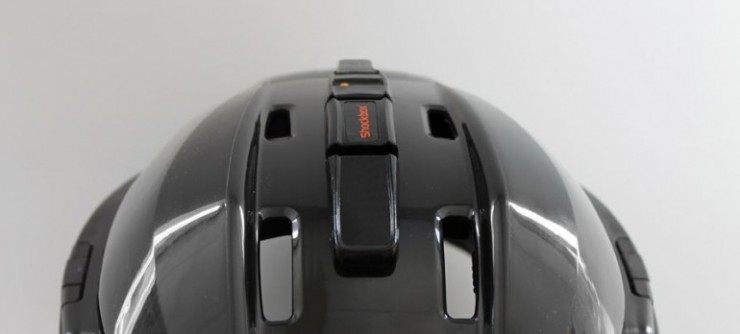Tag Archives: accelerometers
Apple Researching on Developed Velocity Sensitive Touch Input Methods
Accelerometer Equipped LED Braking Lights Work Even With Engine Brake

Without brake lights, motor vehicles would be pretty dangerous; simply watching that hunk of metal in front of you getting bigger isn’t going to cut it, ever. But standard lights are also not 100% perfect. For instance when you slow down through either engine brake or downshifting, nothing lights up. And there’s rarely a way to tell whether you’ve just tapped the brakes or are mashing them with all your might. The VoloLights solve both those issues by including a 3-axis accelerometer. Sadly for motorcycles only, these LED lights will blink any time you’re slowing down, whether it’s through pressing the brake lever, through downshifting or even engine braking. What’s more, they’ll blink more rapidly in proportion to how fast you’re scrubbing speed. The system is embedded into a license plate holder that also has plate illumination so you can remain street legal. At $79 as a Kickstarter pledge, it’s a pretty affordable way to add yet another layer of safety to your ride.

[ Project Page ]
ShockBox Is A G-Meter For Potential Head Injuries

Playing contact sports is all fun and games (literally) until someone gets a concussion, or worse. It’s not always easy to tell between the player that’s laying on the ground because he got the wind knocked out of him, or the one that needs medical attention because his brain got a shakeup. The ShockBox is a special sensor that is meant to be placed either on or inside a helmet, and it contains two things: an accelerometer and a Bluetooth radio. Should any one player experience a severe hit, a signal is immediately sent to a paired smartphone (say, the coach’s) with impact data and analysis. It uses long range Bluetooth, so the device has a range of up to 100m, and one smartphone can pair with up to 128 sensors at once. This means you could conceivably monitor an entire team, and provide medical assistance when needed. ShockBox installs with 3M double sided tape, which is provided with your $149 unit. Yeah, that’s a lot of money to fork over when you’re decking out an entire high school football team, but if you’ve got the budget, you don’t want to be skimping on safety.
[ Product Page ] VIA [ Gizmag ]
Caltech laser accelerometer research may bring fine-tuned position tracking, grocery ads
One way that sensors can track your position without using an array of satellites is by measuring your acceleration as you move around -- but unless you're piloting a jumbo jet, current devices aren't very accurate. Researchers at Caltech hope to change all that with a new, ultra-sensitive accelerometer they developed, which uses laser light to detect motion changes. The scientists managed to shrink a so-called large-scale interferometer down to micro-scale sizes, creating a device "thousands of times faster than the most sensitive sensors used today." That could allow a smartphone with such a micro-sensor to detect your exact position even while inside a grocery store, and flash "ads and coupons for hot dog buns" while you're in the bread aisle, according to Caltech. All that sounds good, but we can perhaps think of more inspiring uses for the new tech.
Filed under: Cellphones, Science, Alt
Caltech laser accelerometer research may bring fine-tuned position tracking, grocery ads originally appeared on Engadget on Fri, 19 Oct 2012 13:44:00 EDT. Please see our terms for use of feeds.
Permalink Tech Eye |
Tech Eye |  Caltech | Email this | Comments
Caltech | Email this | Comments Engineer Guy shows how a phone accelerometer works, knows what’s up and sideways (video)

We love finding out how things work, and arguably one of the most important parts of the smartphones and tablets we thrive on is the accelerometer gauging our device's orientation. Imagine our delight, then, when we see the University of Illinois' Bill Hammack (i.e. The Engineer Guy) giving a visual rundown of how accelerometers work. Although it's certainly the Cliff's Notes version of what's going on in your Android phone or iPhone, the video does a great job of explaining the basic concepts behind three-axis motion sensing and goes on to illustrate how MEMS chips boil the idea down to the silicon form that's needed for our mobile hardware. Hammack contends that it's one of the coolest (and unsung) parts of a smartphone, and we'd definitely agree; you can see why in the clip after the break.
Engineer Guy shows how a phone accelerometer works, knows what's up and sideways (video) originally appeared on Engadget on Tue, 22 May 2012 20:06:00 EDT. Please see our terms for use of feeds.
Permalink Cult of Mac |
Cult of Mac |  EngineerGuy | Email this | Comments
EngineerGuy | Email this | Comments 
